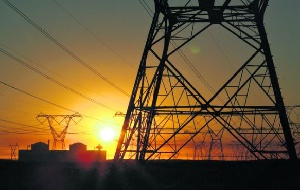 Government of Ghana procured about 50,000 solar lanterns to be distributed in 2015/2016
Government of Ghana procured about 50,000 solar lanterns to be distributed in 2015/2016
Ghana enjoys about 330 days of sunshine annually. The average annual wind speeds along the coast and some islands range from 4-6m/s at 50m hub height. This potential can support utility scale wind power and hybrid micro/mini-grid development.
Since 1998, investors have been exploring different sites to develop at least 250 MW of wind power. According to a World Bank study in 2014, Ghana produces about 10,000 ton/year of agro and wood processing wastes alone. This presents an opportunity for biomass and waste to energy investments.
The solar irradiation levels range from 4.5-6.0kWh/m2/day with the highest irradiation levels occurring in the northern half of the country. Between 2000 and 2014, over 38,000 solar home systems and lanterns have been deployed in more than 120 communities throughout the country for off-grid applications and 25 grid-tied installations with total installed capacity of 7 MW according to the Ghana Energy Commission.
In addition, the Government of Ghana procured about 50,000 solar lanterns to be distributed in 2015/2016. The weakness of this intervention is that people are not aware and the programme is centralised. Further, the Ghana Energy Commission which is mandated to undertake such distribution is often undermined by politicians who try to influence such distributions.
Solar licences
The Ghana Energy Commission has issued more than 55 provisional licences for utility scale solar projects as at 2015. However, only two construction permits have been issued. The large gap between provisional licences and construction can be attributed to the nature of licence acquisition. While an attempt has been made to undertake a competitive bidding for solar licence in 2016, all the 55 licences were issued through direct negotiations. Again, an investor needs to go through District Assemblies, the Environmental Protection Agency(EPA), Ministry of Land, and Attorney General’s Department and other agencies in order to secure a construction permit after receiving a provisional licence from the Energy Commission.
This process becomes frustrating, cumbersome and lengthy in most cases, may account for less than 5 per cent of the 55 provisional licence holders obtaining construction permits. This implies that, although licences have been issued for more than 2700 MW of solar energy, these are just ‘dream MW’ and adds zero to the grid.
Way forward
1. Solar Purchase Options: One of the major barriers to renewable energy, especially solar, is finance. That is, people generally perceive solar and other renewable sources to be expensive. With regards to solar, one of these five models below can help introduce some flexibility and share cost and risks to enhance consumers’ interest to purchase solar panels.
Option 1: Cash Sales: A PV system is sold directly to the customer or end user. This option bestows immediate ownership on the customer.
Option 2: Dealer Credit: The PV supplier/dealer sells the PV system to the customer, who enters into a credit arrangement with the PV dealer. Depending on the arrangements, the end user immediately becomes the owner of the system or becomes the owner when all payments are made.
Option 3: End-user Credit: The PV supplier/dealer sells the PV system to the end user, who obtains consumer credit from a third party credit institution. Usually, the end user becomes the owner of the system immediately, but this can be delayed until all payments are made. The PV system can be used as collateral against the loan.
Option 4: Lease / Hire purchase (The Karpower Model): The PV supplier/dealer or a financial intermediary leases the PV system to the end user: At the end of the lease period, ownership may or may not be transferred to the end user, depending on the arrangements. During the lease period, the leaser remains owner of the system and is responsible for its maintenance.
Option 5: Fee for service (The ECG Model): An energy service company (ESCO) owns the system, and provides an energy service to the end user who pays a periodic fee (e.g., monthly) to the ESCO. The end user is not responsible for the maintenance of the system and never becomes the owner. This option is already being practised in the Ashanti Region by Blackstar Energy.
2. Competitive bidding to issue renewable energy licence is encouraged to get best offers for the country and to reduce cost.
3. Special Deal with Real Estate Developers: A special arrangement can be signed with the Ghana Real Estate Developers Association(GREDA) and other private developers to fix solar panels on all new homes. There should be efforts to have net metering schemes to allow solar users sell excess power to the electricity company of Ghana.
5. Operationalisation of the Renewable Fund: This will support SMEs and lifeline consumers to acquire solar. Government can use the energy fund to shift all lifeline customers to solar to minimise or remove electricity subsidies. The operationalisation should be accompanied by structured distribution mechanism and training for those who will receive the panels. The inspectorate division of the Energy Commission should be strengthened to offer support to customers who obtain subsidised panels. Investments in Smart Grids: Renewable energy deployment is often limited by the inability of the grid to cope with volatility in renewable energy supply. It will be prudent to consider investments in smart grids.
6. Supporting technical institutions to produce and promote ‘made in Ghana’ renewable technologies such as solar panels.
7. The Public Utility and Regulatory Commission (PURC) and the Energy Commission should fast-track the development of the Renewable Energy Purchase Obligations (REPO) to Distribution Utilities and Bulk Customers.
8. Energy Commission should be decentralised. — GB